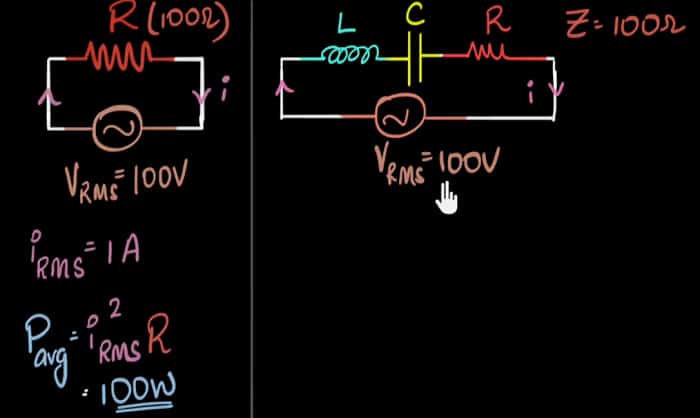The answer to “How many watts is 50 amps?” is never constant. In truth, it depends on how many volts a circuit has, whether it’s AC or DC, and the power system. In a DC circuit, 50 amps at 240 volts will pull 12,000 watts, but a 120V circuit will only use half that or 6,000 watts.
Be mindful of the circuit’s voltage, then use the formula: Watts = Amps x Volts. AC circuits require paying attention to the power factor (i.e. Watts = Amps x Volts x pf) and whether they’re single-phase or three-phase.
Continue reading for sample calculations and a more detailed take.
Table of Contents
The Myriad Watts of 50 Amps — How to Calculate
As is obvious from my points above, calculating watts to amps in a DC circuit is the rudimentary, easier route. In fact, 1 amp = watts/voltage (assuming both are of equal values). If amperage is constantly 1, then 120V = 120W and 240V = 240W.
Slight deviations in voltage may result in equally minor differences, but what’s sure is that calculating 50 amp wattage in such circuits can be done easily.
- For example, even though 110V and 120V are essentially similar, if we calculate 50 amps to watts in such circuits, we’ll get 5,500W and 6,000W, respectively.
- In 220V and 240V circuits, you’ll have 11,000W and 12,000W.
- If the circuit uses 50 volts, 50 volts to watts will equal 2,500W.
- At 12 volts, the watts value will be 600W.
So if you’re wondering “50 amps equals how many watts?” and you happen to be using a DC circuit, then just stick to the simple formula I used in the examples I shared above.
It also doesn’t make sense to ask what is 50 amps in volts since voltage ratings are pretty static figures.
Can you use the same formula for other amperage values? Yes, feel free to use it for lower or higher amps, as long as you know your exact voltage rating.
- 60 amps at 240 volts draw 14,400 watts.
- 40 amps at 220 volts will have 8,800 watts.
- 30 amps at 240 volts yield 7,200 watts.
- 20 amps at 120 volts will pull 2,400 watts.
Let’s say you got a reading with decimals, such as 50.5 amps, on your clamp meter. The formula above will still work, so long as we adjust accordingly:
- 1A x 240V = 12,024W
- 2A x 240V = 12,048W
- 3A x 240V = 12,072W
- 4A x 240V = 12,096W
- 5A x 240V = 12,120W
- 6A x 240V = 12,144W
- 7A x 240V = 12,168W
- 8A x 240V = 12,192W
- 9A x 240V = 12,216W
AC Circuits Are a Different Beast
The thing is, you’re likely working with an AC circuit, especially if you’re a US resident. We love efficiency, after all, and AC beats DC in that regard. That’s why you should really be paying close attention to the formula we mentioned, the one that involves the power factor.
Power factor pertains to the difference between the apparent power and actual power consumed. It indicates how much energy is actually being utilized in a given circuit (i.e. the ratio of V x A to the power consumed) so it will affect the total watts.
Power factor is consistently 1 in DC circuits, but for AC setups, it varies.
Basically, in AC circuits, the power factor can be less than 1 and more than 0 because of the presence of inductors and capacitors. Why this is the case is an entire topic in itself. If you’re interested, I suggest you watch this good video explanation:
You also won’t arrive at an exact figure of how many watts can 50 amps handle in AC circuits if you don’t factor in its power system or whether it’s single-phase or three-phase.
1. Single-Phase
For single-phase circuits, you’ll only need to add the power factor value to the formula. Take note that the usual power factor values in single-phase are between 0.4 and 0.9.
How many watts can a 50 amp breaker handle if the power factor is 0.8 in a 220V circuit?
50A x 220V x 0.8 = 8,800W
As you can see, that’s quite a big change from the 11,000W in a DC circuit with the same volts and amps.
2. Three-Phase
Three-phase motors slightly complicate the formula further, since you need to add √3 or 1.73 to it.
√3 is important in three-phase systems because it represents the 120° displacement between the three phases. Again, that exact displacement is chosen due to practical reasons, particularly the fact that it makes it easier to construct generators and motors.
Assuming we have an 18HP 50 amp generator with a full load power factor of 0.86 in a 240V circuit, we get the following formula:
50A x 240V x 0.86 x 1.73 = 17853.6W
Formula Table for Calculating Watts
| Circuit Type | Formula |
| DC | W = A x V |
| AC, single-phase | W = A x V x pf |
| AC, three-phase | W = A x V x pf x 1.73 or √3 |
Conclusion
It’s quite clear that the question, “How many watts is 50 amps?” is not as simple as it seems, especially once you wander into the more complex territories of AC circuits, power factors, and power systems.
As long as you remember how to calculate the wattage based on the type of circuit or power system you have, then you won’t have to worry about mistakes and inaccuracies.
Ultimately, it’s still way better to crunch the numbers manually instead of relying on amps-to-watts calculators and tables that fail to take all essential factors into account.

I am Edwin Jones, in charge of designing content for Galvinpower. I aspire to use my experiences in marketing to create reliable and necessary information to help our readers. It has been fun to work with Andrew and apply his incredible knowledge to our content.


